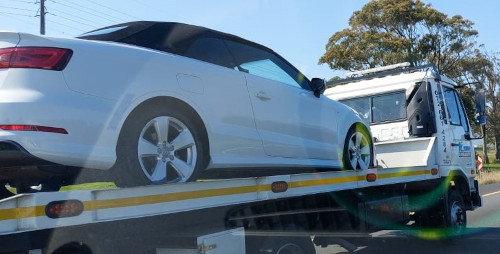The Volkswagen Polo Specifications
When you look at a Volkswagen's spec sheet—whether for a
vintage Beetle or the latest ID.4 electric SUV—you're not just reading a list
of numbers. You're reading a story of engineering philosophy, a legacy of
"Das Auto." Understanding these specs is key to appreciating what
makes a Volkswagen more than just a car. This guide breaks down the essential
specifications, explaining not just what they are, but why they
matter.
The Volkswagen Polo isn't just a car; it's a statement of
substance in the compact hatchback segment. Since its introduction, it has
built a formidable reputation for German-engineered build quality, a planted
driving feel, and timeless design. However, navigating its various trims,
engines, and specifications can be daunting. This guide decodes the Polo,
focusing on its specifications to help you understand exactly what you're
getting.
The Trim Hierarchy: Trendline, Comfortline, Highline
Volkswagen structures its models around clear trim levels,
defining the balance between value and features. The Polo typically follows
this global pattern (with regional variations like the "S" trim in
some markets).
- Trendline
(or Base): The entry point. It focuses on core engineering and
safety essentials. Expect a solid chassis, multiple airbags, ABS, and a
basic infotainment system. It's for the purist who prioritizes the driving
experience over frills.
- Comfortline
(or Mid): The sweet spot for most buyers. It significantly
enhances convenience and aesthetics. Key additions often include:
- Air
Conditioning (A/C) as standard (a common upgrade from
Trendline).
- Alloy
wheels.
- Height-adjustable
driver's seat.
- Enhanced
interior trim and steering wheel.
- Advanced
infotainment with touchscreen, smartphone connectivity (Apple
CarPlay/Android Auto).
- Highline
(or Top): The flagship trim for luxury and technology. It builds
on Comfortline with premium features such as:
- LED
lighting (headlights and DRLs).
- Climate
control (vs. manual A/C).
- Leather-wrapped
steering wheel and gear knob.
- Rain-sensing
wipers and auto-dimming mirror.
- Advanced
driver-assistance systems (like cruise control, rear camera).
- Distinctive
exterior styling elements.
The "Polo S" often slots in as a
sporty-looking variant based on the Comfortline or Trendline, adding visual
flair like specific bumpers, tinted windows, and unique upholstery, without the
full performance upgrades of a true GTI.
The Heart of the Matter: Engine & Performance
Specifications
The Polo's character is largely defined by its powertrain.
Over the years (like the popular 2015 model), offerings have included:
- Petrol
Engines:
- 1.0L
MPI (Multi-Point Injection): The base, naturally-aspirated
engine. Adequate for city driving, focusing on simplicity and
cost-effectiveness. Mileage: ~14-16 km/l.
- 1.0L
TSI / 1.2L TSI (Turbocharged Stratified Injection): The modern
heart of the range. This turbo-petrol engine delivers excellent power and
torque from low revs, making it responsive and efficient. It’s the most
versatile choice. Mileage: ~17-19 km/l.
- 1.6L
MPI: The older, larger unit offered strong linear power. Mileage: ~13-15
km/l.
- Diesel
Engines (now largely phased out in many markets):
- 1.5L
TDI / Older 1.4L TDI (Turbocharged Direct Injection): Famous for
their "torque punch" and outstanding fuel efficiency. The 1.5L
TDI was particularly refined. Mileage: A key selling
point, often achieving 20-22 km/l or even higher on
highways, making it a favourite for high-mileage drivers.
- The
Performance Icons:
- Polo
GT: Historically offered as a petrol (TSI) or diesel (TDI)
"warm hatch," featuring more powerful engine tunes, sport
suspension, and cosmetic enhancements over the Highline.
- Polo
GTI: The true hot hatch. Features a powerful 2.0L TSI engine
(past models had 1.8L), sportier aesthetics, performance brakes, a
distinctive interior, and a commitment to driving thrills.
- Polo
BlueGT: A focused efficiency-performance model, often using
engine technology like ACT (cylinder deactivation) for high power with
low fuel consumption.
Understanding Key Specs: Beyond the Brochure
- Mileage
(Fuel Efficiency): Always check the testing standard (e.g., ARAI
in India, WLTP in Europe). Real-world figures are typically 10-15% lower.
Diesel variants, while efficient, came with higher upfront costs.
- Dimensions
& Boot Space: The Polo is known for its solid, wide stance,
which contributes to stable handling. Boot space (~280 litres) is
competitive, and rear seat comfort is adequate for the segment,
prioritising quality over outright space.
- Safety: A
core Polo strength. Even older models scored well in crash tests (e.g.,
the 2015 Polo achieved a 5-star Euro NCAP rating). Specifications always
include multiple airbags (2, 4, or 6), ABS with EBD, and ISOFIX child seat
mounts. Higher trims add Electronic Stability Control (ESC).
Cost & Price Positioning
The Polo has historically been priced at a premium
over rivals like the Maruti Swift or Hyundai i20. This reflects its
perceived quality, safety, and driving dynamics.
- Trendline offers
the most accessible entry point.
- Comfortline represents
the best value-for-money for feature-seeking buyers.
- Highline commands
the highest price, appealing to those wanting a premium, feature-rich
compact experience.
- GT/GTI models
carry a significant premium for performance.
As a used car (e.g., a 2015 model), the Polo is
renowned for its strong residual value. A well-maintained Highline
TDI variant, in particular, holds its value exceptionally well due to its
desirability.
The Verdict: Who is the Polo For?
The Volkswagen Polo's specifications tell a consistent
story: it’s a car engineered for substance over spectacle.
- Choose
the Trendline for the pure driving essence.
- Choose
the Comfortline/Highline TSI for a refined, modern, and
efficient daily drive with premium touches.
- Choose
a used Highline TDI (from the diesel era) for unbeatable
highway mileage and torque-rich driving.
- Choose
the GT or GTI for an injection of fun and performance.
Ultimately, decoding the Polo's specs reveals why it remains
an icon. It's not necessarily about having the longest feature list on paper,
but about the integrity of every component listed—from its engine code to its
safety rating—that delivers a confident, quality driving experience.















